Subtropical climates are non tropical climates with cool winters with little or no frosts. In subtropical climates, Winter is a noticeably cooler season. It is relatively warm, but never as hot as the summer season. These climates rarely, if ever, see frost or snow. Subtropical belts exist in both hemispheres and they are located just North and South of the tropics.
Rainfall patterns vary widely throughout the subtropics including hot deserts, savannas, monsoon forests, humid forests and the warmer parts of the Mediterranean climate zone. Subtropical regions include:
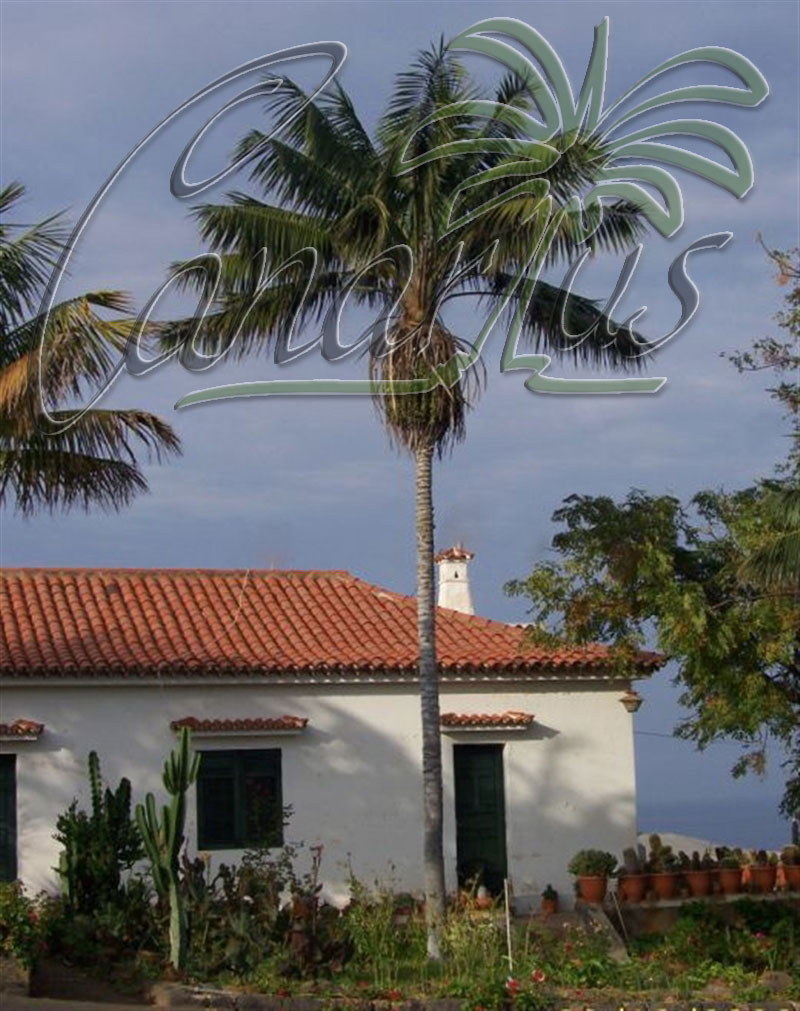
Typical House in Tenerife, with a Subtropical Kentia Palm and Potted Cacti
Northern Hemisphere: California, Texas, Florida, Canary Islands and Madeira, parts of the Mediterranean, northern India, southeast China, Southern Japan
Southern Hemisphere: So. Brazil, N. Argentina, Parts of Chile, Uruguay, large parts of Australia and coastal South Africa (Mostly Natal)
Subtropical Climate in Europe
Europe has some Subtropical spots too in warmer, coastal areas within the mediterranean climate area. The climate in the Southern Mediterranean, with little or no frost , can be defined as Subtropical climate. This is the case of the coastal areas of Southern Portugal (Algarve), Southern Spain (Andalucia, Almeria, Murcia), Southern Italy (Sicilia, Calabria) and Southern Greece. Even cooler Subtropical areas can be found in Southern France (Cote d’Azur). Warmer spots are also found in the United Kingdom, precisely in the Isles of Scilly with 6 °C (42.8 °F) average in the coldest month. Of course there is a lot of difference between the Isles of Scilly and a typically hot subtropical climate like Florida. The English islands have a cooler, even climate reminiscent of the mountain climate in the warmer Subtropics.
The Canary Islands are located in the Subtropical belt too, very close to the tropics. The climate is frost-free on the coast, but it less hot than in many Subtropical areas because of the trade winds and the cold ocean. The Canaries are the only territory of Europe located straight into the subtropical belt. Even here we do not have a typical subtropical climate, because our climate is also Mediterranean, because of the rainfall pattern and also Oceanic, because of the cooling effect of the sea.
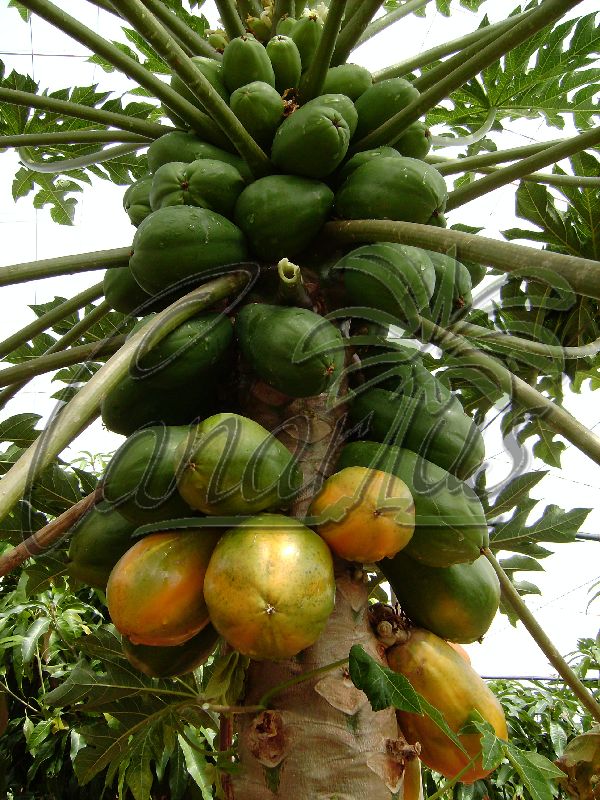
Fruiting papaya in the Canary Islands
Exotic Gardens and Crops in Subtropical Climates
Many tropical species will tolerate the winter in the Subtropics and will grow outdoors. More than 500 palm species can live in Subtropical areas with little or no frost, exotic flowers such as Bird of Paradise (Strelitzia) or (Heliconia) and many Cycad species. The beautiful Bromeliad Family is a must in any garden. Hundreds of species of Succulent Plants from dry areas can grow and bloom as long as they are kept dry in winter. The dry subtropics include many of the world desert, so here is where most desert gardens are developed. Also the tropical succulent species will do fine, like Melocactus or Adenium and Pachypodium if kept well drained. Palm-like desert plants, such as Yucca and Dasylirion, thrive to perfection.
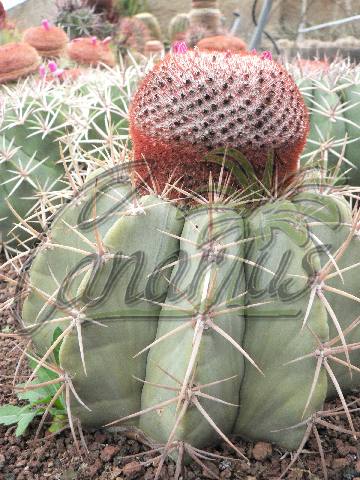
Melocactus conoideus grows outdoors on the Subtropical coast of Tenerife
Fully tropical species can grow in the Subtropics. They may slow down or stop in winter but most will grow reasonably well. Many tropical fruit trees grow freely. Mango, Papaya, Sugar Cane and Avocados are produced commercially in various subtropical regions of the world. Occasional frosts or short summers limit the spread of tropical horticulture in the Subtropics.
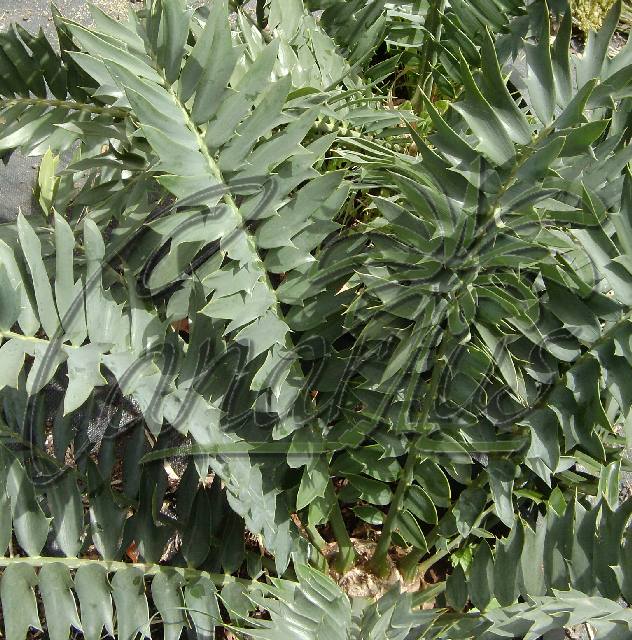
A blue leaved Cycad from the subtropical coast of South Africa, Encephalartos arenarius.
An impressive number of Palms and Cycads is kept by collectors. Many tropical flowers will winter outdoors. Bromeliads can be used freely as garden plants, as well as Heliconias. In lower latitudes, Cacti and Succulents are simply part of the landscape. Different species of Agave, mostly from Mexico, grow wild on the hillsides of Mediterranean Europe and Aloes flourish in pots and gardens. Large specimens will often enhance the garden of the villa, in the ground or in large pots. Southern Spain and Portugal are even sunnier, almost as Northern Africa so Cuban Royal Palms (Roystonea regia) and Royal Poincianas (Delonix regia) thrive in many coastal location, papayas will fruit with little effort.
With some protection and some effort you can grow subtropical plants in colder climates. Visit our blog section about Tropical Gardening in Northern Climates.
——————
Come to our shop and buy the best subtropical plants of all kinds. We ship to anywhere in Europe.
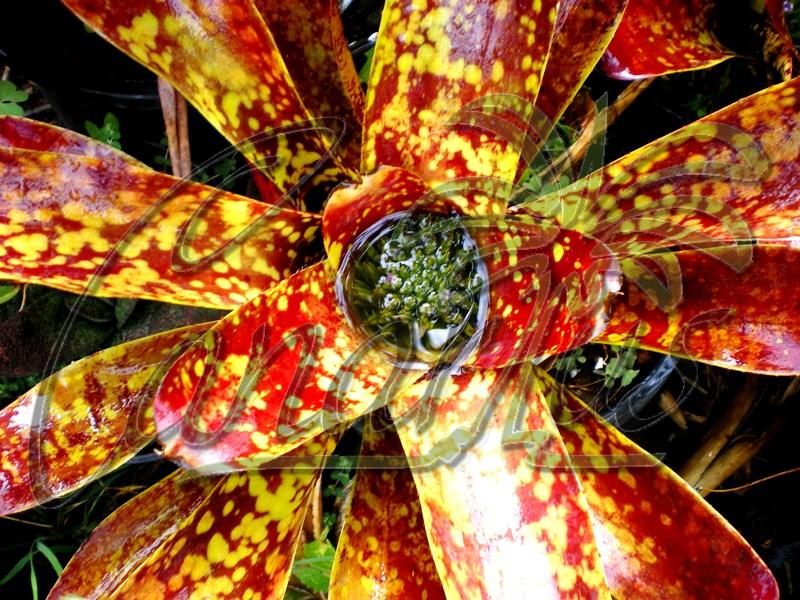
Fabulous colours on the bromeliad Neoregelia chlorosticta, blooming with yellow and red leaves















